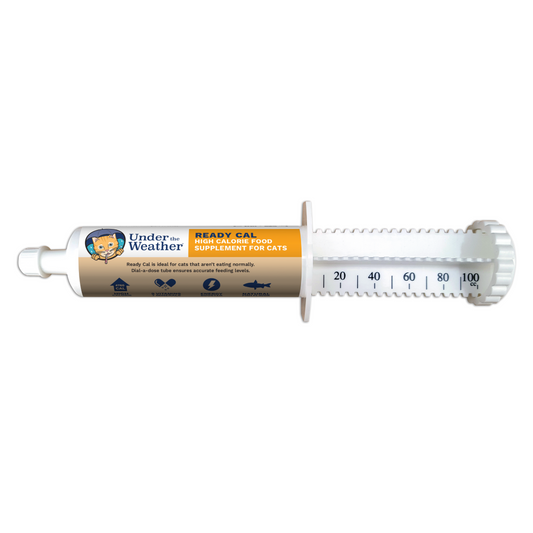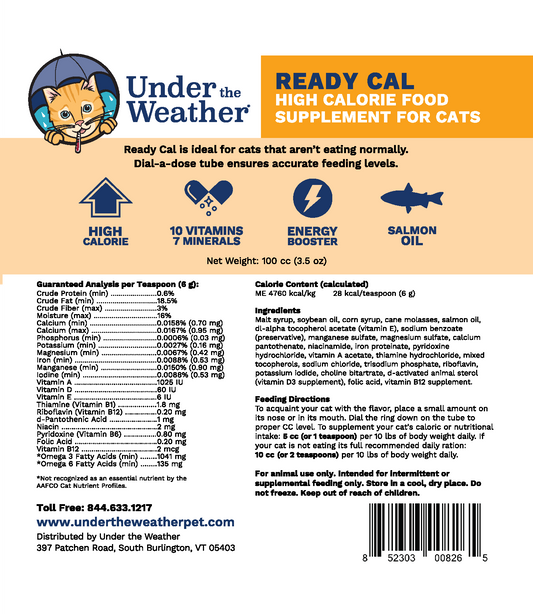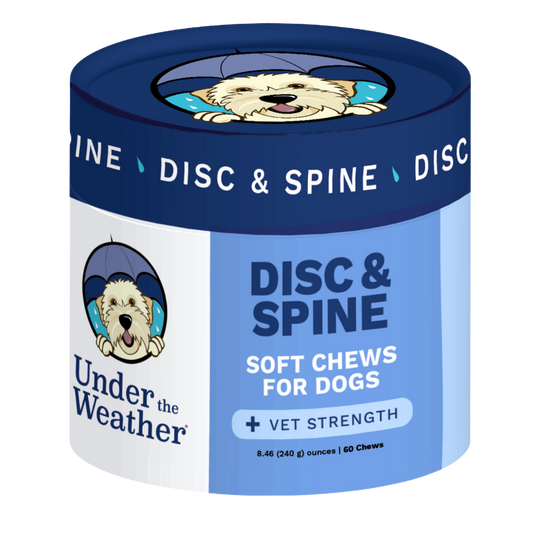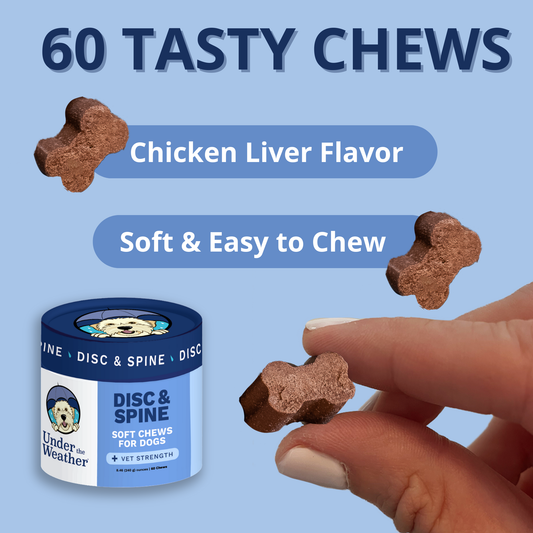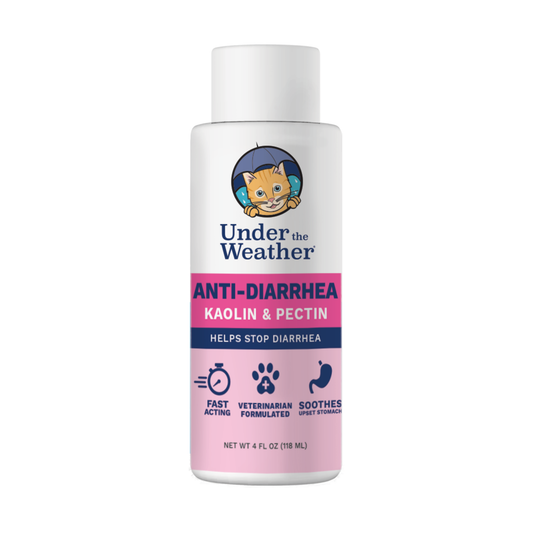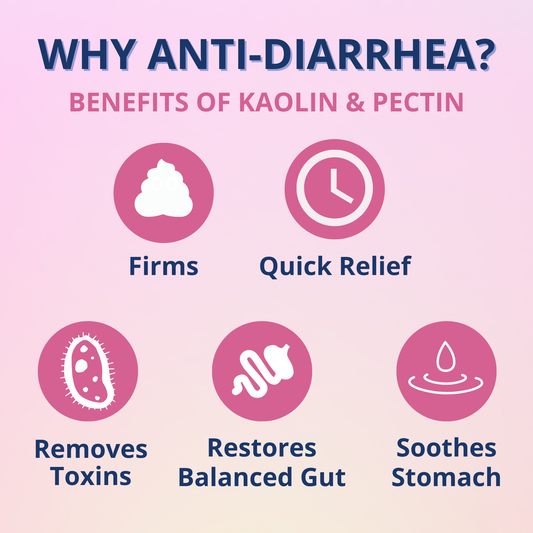Cavalier King Charles spaniels are a popular breed known for their friendly temperament and loving nature. However, like any other breed, they are not immune to certain health conditions, and one of the most prevalent among Cavaliers is Intervertebral Disc Disease (IVDD). Understanding IVDD, recognizing its symptoms, diagnosing it accurately, and exploring treatment options is essential for owners of these beloved dogs. In this article, we will delve into the world of IVDD in Cavalier King Charles Spaniels and provide valuable insight and information for concerned guardians.
Understanding IVDD: A Brief Overview
IVDD, or Intervertebral Disc Disease, is a spinal condition that affects the cushioning discs between the vertebrae in a dog's back. These discs function as shock absorbers, providing flexibility and protecting the spinal cord. IVDD occurs when these discs degenerate or become herniated, resulting in pain, discomfort, and potentially serious neurological problems.
Defining IVDD
IVDD is a degenerative condition that primarily affects the spinal column in dogs, including Cavaliers. It refers to the abnormal changes that occur in the intervertebral discs, compromising their integrity and function. The severity of IVDD can range from mild back pain to complete paralysis, depending on the location and extent of the disc damage.
Causes of IVDD
The exact cause of IVDD remains unknown, but several factors can increase a Cavalier's risk of developing the condition. Genetics, obesity, physical stress on the spine, and age-related degeneration are among the primary contributors to the development of IVDD. Additionally, certain breeds, such as Cavalier King Charles spaniels, are more predisposed to this disorder.
Breeds at Risk: The Cavalier King Charles Spaniel
The Cavalier King Charles spaniel is one of the most commonly affected breeds when it comes to IVDD. Due to their genetic makeup and physical characteristics, Cavaliers have a higher susceptibility to developing this spinal condition. Cavalier owners need to be aware of the signs and symptoms associated with IVDD to ensure early detection and prompt treatment.
One of the reasons why Cavaliers are more prone to IVDD is their long, low-slung bodies. This unique body structure puts additional strain on their spinal discs, making them more susceptible to degeneration or herniation. Furthermore, the genetic component cannot be overlooked. Cavaliers inherit certain genes that predispose them to IVDD, making it crucial for responsible breeders to prioritize the health of their breeding stock.
Aside from genetics and body structure, obesity can also play a role in the development of IVDD in Cavaliers. Excess weight puts additional stress on the spinal discs, increasing the likelihood of degeneration or herniation. Cavalier owners need to maintain a healthy weight for their dogs through proper diet and regular exercise, as this can help reduce the risk of IVDD and other health issues.
Recognizing the Symptoms of IVDD in Cavaliers
Early recognition of IVDD symptoms is crucial for timely intervention and improving the chances of a successful outcome. As a caring owner, it is essential to be vigilant and look out for any signs of potential spinal problems in your Cavalier.
Intervertebral Disc Disease (IVDD) is a common spinal condition in dogs, particularly in small breeds like Cavaliers. The condition occurs when the cushioning discs between the vertebrae of the spine bulge or burst into the spinal cord space, leading to pain, nerve damage, and in severe cases, paralysis.
Physical Signs to Look Out For
Physical signs of IVDD in Cavaliers may include reluctance to jump or climb stairs, difficulty standing or walking, hunching of the back, and sensitivity to touch. Some dogs may also display signs of pain, such as yelping or whimpering when touched or lifted.
It's important to note that while these signs can indicate IVDD, they can also be symptomatic of other health issues. A thorough examination by a veterinarian, which may include imaging tests like X-rays or MRIs, is crucial for an accurate diagnosis.
Changes in Behavior
IVDD can also cause behavioral changes in affected Cavaliers. They may become more irritable, aggressive, or unusually withdrawn. Changes in appetite, including a loss of interest in food or a decrease in water consumption, can also be indicative of IVDD.
These behavioral changes can be distressing for both the dog and the owner. Understanding that these shifts in behavior are often a response to pain and discomfort can help in providing the necessary support and care for the affected Cavalier.
Progression of Symptoms
The symptoms of IVDD may progress over time, worsening as the condition advances. Initially, a dog may experience mild discomfort and difficulty with certain movements. As the disease progresses, they may lose coordination, develop weakness or paralysis in one or more limbs, and have difficulty controlling bodily functions. It is important to seek veterinary attention promptly if you observe any of these symptoms in your Cavalier.
Early intervention, which may include medication, physical therapy, or in severe cases, surgery, can help manage IVDD and improve the quality of life for your beloved pet. Regular veterinary check-ups and maintaining a healthy weight can also aid in preventing the onset or progression of IVDD in Cavaliers.

Diagnosing IVDD in Cavalier King Charles Spaniels
Accurate diagnosis is key to effectively managing IVDD in Cavaliers. Veterinary professionals employ various examinations and imaging techniques to assess the spinal health of these dogs.
Intervertebral disc disease (IVDD) is a common condition in Cavalier King Charles spaniels, a breed predisposed to spinal issues due to their anatomy and genetics. Understanding the diagnostic process is crucial for early detection and appropriate treatment.
Veterinary Examinations
During a veterinary examination, the veterinarian will evaluate your Cavalier's gait, reflexes, muscle tone, and overall mobility. They may also physically manipulate the spine to assess pain response and identify any potential neurological deficits. Observing the dog's movements and responses provides valuable insights into the extent of spinal cord compression and nerve damage.
Cavaliers are known for their friendly and affectionate nature, which can sometimes mask signs of pain or discomfort. This is why a thorough physical examination by a skilled veterinarian is essential in uncovering subtle indicators of IVDD.
Imaging Techniques for Diagnosis
Imaging techniques, such as X-rays, CT scans, or MRI scans, are commonly employed to visualize the spinal column and intervertebral discs. These diagnostic tools help identify any abnormal changes or herniations in the discs, confirming the presence of IVDD. Advanced imaging technologies allow for detailed views of the spinal structures, aiding in treatment planning and prognosis assessment.
While X-rays provide a good overview of the spine's bony structures, MRI scans offer superior soft tissue visualization, crucial for evaluating the intervertebral discs and spinal cord. CT scans, on the other hand, provide detailed cross-sectional images that can aid in surgical planning for severe cases of IVDD.
Confirming the Diagnosis
Based on the findings from the clinical examination and diagnostic imaging, the veterinarian will be able to provide a definitive diagnosis of IVDD in your Cavalier King Charles spaniel. It is important to remember that only a licensed veterinarian can confirm the presence of this condition. Treatment options may vary depending on the severity of the disease, ranging from conservative management with medications and physical therapy to surgical interventions for more advanced cases.
Treatment Options for IVDD in Cavaliers
Effective management of Intervertebral Disc Disease (IVDD) in Cavaliers is crucial for ensuring the well-being and quality of life of these beloved companions. IVDD is a common condition in this breed, characterized by the degeneration or herniation of intervertebral discs in the spine, leading to pain, mobility issues, and in severe cases, neurological deficits.
When addressing IVDD, a comprehensive and tailored approach is essential, taking into consideration the individual needs and conditions of each Cavalier. Treatment options range from non-surgical interventions to surgical procedures, with the goal of alleviating pain, improving mobility, and preventing further damage to the spinal cord.
Non-Surgical Treatments
Non-surgical treatments play a vital role in managing IVDD in Cavaliers. These may include a combination of pain management medications, anti-inflammatory drugs, and strict rest to allow the affected discs to heal. Additionally, physical therapy modalities such as hydrotherapy, therapeutic exercises, and passive range of motion techniques can aid in strengthening the supporting muscles and improving flexibility in the spine.
Complementary therapies like acupuncture and laser therapy have also shown promising results in managing pain and inflammation associated with IVDD. These holistic approaches not only target the physical symptoms but also promote overall well-being and relaxation in Cavaliers undergoing treatment.
Surgical Interventions
In cases where non-surgical options are insufficient or the condition is rapidly deteriorating, surgical intervention may be necessary to address IVDD in Cavaliers. Surgical procedures aim to either remove the herniated disc material or decompress the affected area, thereby reducing pressure on the spinal cord and nerves. The choice of surgical technique, whether it be a hemilaminectomy, fenestration, or spinal fusion, depends on factors such as the location and severity of the disc herniation.
Post-Treatment Care and Rehabilitation
Following either non-surgical or surgical treatment for IVDD, Cavaliers require dedicated post-treatment care and rehabilitation to optimize recovery and long-term outcomes. This comprehensive care plan may involve a gradual return to activity, controlled exercises to improve strength and flexibility, weight management strategies to reduce strain on the spine, and regular monitoring by veterinary professionals to assess progress and adjust the treatment regimen as needed.
Conclusion
In conclusion, IVDD is a prevalent condition in Cavalier King Charles spaniels that requires prompt recognition, accurate diagnosis, and appropriate treatment for the best chance at a positive outcome. Owners of Cavaliers should be aware of the potential signs and symptoms of IVDD, as well as the various treatment options available. With proper care and management, Cavaliers with IVDD can lead fulfilling lives and continue to bring joy to their families for years to come.




